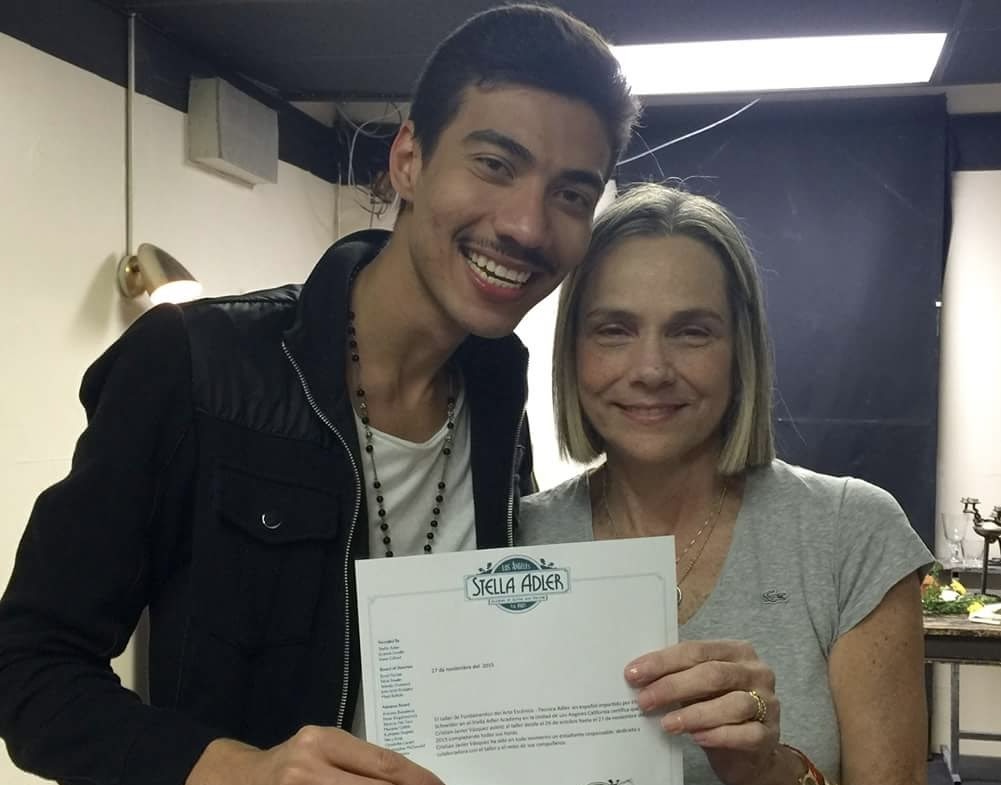(DENVER) – The ongoing defamation cases against Alex Jones, the infamous host of the internet and radio program Infowars, are an instructive example of the limitations of performative speech in the new media landscape. New media, in this sense, refers to publishers who distribute digital content that is meant to both inform and entertain their audience. While many new media outlets blur the line between journalism and entertainment, the default judgment issued against Jones in two of the four cases he is fighting shows that new media entities cannot escape the journalistic norms that traditional outlets are held to. Jones has previously described his work as journalistic and packages his content under the guise of exposing “hidden truths” concealed by the “elite.” However, he has consistently failed to provide an opportunity for those he mentions in his show to respond to his sweeping claims. On top of that, Jones personally attacks those he accuses, a tactic that led to the defamation cases in the first place. These ethical issues will become increasingly important in the future, given the increased blurring of the line between traditional journalism and new media.
The defamation cases against Jones began in 2018 after four sets of parents whose children were killed in the Sandy Hook Elementary School massacre filed complaints in the Superior Court of Connecticut and the Travis County District Court in Texas alleging that Jones had defamed them. The complaints stemmed from multiple instances between 2013 and 2014 when Jones called them “crisis actors” and that the shooting itself was “staged” to help Congress gain support for new gun control legislation.
Jones made these comments on his web show, which attracted millions of listeners at the time. He also packaged this content to his listeners as a truth that the Connecticut government was trying to hide. The Infowars website ran articles with headlines such as “CONNECTICUT TRIES TO HIDE SANDY HOOK TRUTH” and “FBI SAYS NO ONE KILLED AT SANDY HOOK,” according to documents preserved by New York University’s First Amendment Watch.
These statements had a chilling effect on the lives of the parents who lost their children in the shooting. Neil Heslin told Travis County Court in early August that Jones had made his life a “living hell” by calling the killing of his six-year-old son a “hoax.” Heslin said he endured online abuse, threatening phone calls, and harassment on the street, according to a report by NPR. Veronique De La Rosa and Leonard Pozner, whose son Noah was also among the 20 first-graders to be killed that day, said they have faced several death threats from Jones’ listeners. The couple now lives in hiding because of the threats, according to interviews with PBS Frontline.
Even though Jones claimed in previous court filings that he is a performance artist, Travis County Court found that his discourse was defamatory because his speech was “absolutely reckless” and inspired Jones’ listeners to harass the parents. It was also categorized as defamatory because Jones made knowingly false statements about the Sandy Hook parents and packaged those false statements as “truths” on his show rather than as his opinions. Jones’ failure to retract those statements could be a key point for prosecutors going forward who need to prove that actual malice was at play.
Stephen Solomon, Interim Director of the Arthur L. Carter Journalism Institute at New York University and founding editor of First Amendment Watch, told me in a recent interview that First Amendment case law clearly makes a distinction between false speech, such as lying or false advertising and political opinion. In Jones’ case, this means that his lies about the Sandy Hook parents cannot be protected by First Amendment defenses.
“If you generally say that there was election fraud and that Donald Trump won the 2020 election, that’s wrong, but it may not be actionable,” Solomon said. “The First Amendment protects you, and the remedy for that in a free society is that you push back with truthful speech. But if you use that lie to attack someone’s character, then they may be able to make a claim of defamation.”
Judge Maya Guerra Gamble in Travis County, Texas, set the right-wing media sphere on fire on August 5th after she issued a default judgment that requires Jones to pay more than $45.2 million in punitive damages for defaming two sets of parents who lost their children during the Sandy Hook massacre in 2012. This ruling triggered a firestorm of criticism by Jones sympathizers. Max Blumenthal, editor of the right-wing news site The Grayzone, defended Jones by saying the Sandy Hook parents portrayed themselves as “victims of too much free speech.” Wendy Rogers, an elected Republican official in Arizona, took to social media to claim that Jones “should be able to criticize the official story whenever he wants” and that “Americans should help pay his legal bills.”
The comments are nothing new from the right. Fellow podcaster Joe Rogan, who has previously said he is not a Republican despite having a fanbase that leans heavily to the right, previously defended Jones on his show by saying that Infowars and its host are performance artists and therefore, the speech should be protected under the First Amendment. “It’s kind of like performance art, but with a little bit of horseshit,” Rogan said. Marjorie Taylor Green, a Republican congresswoman who represents part of north Georgia, said that she doesn’t agree with the content of Jones’ speech but that the trial against him for defaming the Sandy Hook parents amounts to “political persecution.”
While pundits and politicians quickly took issue with the ruling, legal experts like Solomon and Texas defamation attorney Chuck Sanders said it was valid, even though some disagreed with the total amount of damages awarded. Generally, Texas courts cap punitive damages in cases where economic losses are not incurred at $750,000, according to the state’s Civil Practices and Remedies Code. Sanders told Reuters that there is “no way” the Sandy Hook families will collect the more than $45 million awarded to them because of a Texas law that caps damages when economic losses are not also incurred. Solomon told me that the total awarded by the jury “wasn’t surprising” given the nature of the case.
But the case is also instructive for entrepreneurs who see Jones’ sensationalistic media style as a profitable business venture. The Texas court seems to be drawing a bright red line between performative speech, which is protected by the First Amendment, and defamatory speech. This is especially important as the line between professional journalism and performance art continues to be obscured by new media entities like Jones and similar ilk.
The distinction between protected and defamatory speech is becoming increasingly important as new media entities on both sides of the political aisle continue to use hot rhetoric to describe the other side. One example is The Daily Wire, a right-wing news website, which accused President Joe Biden of “gaslighting the nation” over inflation and the state of the U.S. economy. On the left, The Young Turks, a news commentary show, accused former president Donald Trump of “looking awfully guilty” after he invoked his Fifth Amendment right against self-incrimination in the New York state investigation into his namesake charity organization for allegedly committing tax crimes. Outside of the political sphere, this label of ‘new media’ applies to organizations such as Barstool Sports. While these companies publish both factual and opinion-based reports, they also publish their content through multiple platforms like web videos and podcasts.
According to an article by Jesse Farmer, a media studies professor at Grand Canyon University, the term “new media” refers to “any type of digital content such as technology, images, audio and text” that is distributed via the internet.” Some examples include performative, and often independent media creators like Jones who will also use a “listen and respond” method to grow their audience on social media platforms, as Michael Skolker argued in a 2009 article for Nieman Reports. This strategy is one of the diverging points between new media and traditional journalism. The “listen and respond” method intends to make audiences feel like they are part of the news creation process, whereas traditional journalism simply gives its audience the result of its reporting.
This model that Skolker alludes to is also a main component of the monetization strategy of many bloggers, podcasters, and social media personalities. As Skolker predicted more than 12 years ago, media companies who listen and respond to their audiences increase engagement and are, therefore, more attractive platforms for advertisers. According to data from Similarweb, a website analytics firm, the Infowars website has a higher page-per-visit and average visit duration rates than CNN, the New York Times, and NBC News despite ranking well below the news websites in national and global markets. This engagement is also part of the reason why Jones and his Infowars website were so successful at selling merchandise, survival gear, and supplements to his audience for several years.
As this strategy becomes more popular among online personalities and niche media outlets, it can also create legal risks, especially as new content distribution methods emerge. Jones began his career as a radio personality in the 90s, but his personal brand became solidified after he claimed that 9/11 was an inside job by the Bush Administration. Since then, he has solidified the language of conspiracy theories in America today, including the adage that tragedies such as Sandy Hook are being manufactured for nefarious purposes.
Jones’ lawyers have consistently argued that his speech should be protected because he has a constitutional right to “question official narratives” on his radio program, no matter how ludicrous his claims may be. However, the Travis County judge seems to be arguing that Jones is required to question these narratives in good faith. That would require Jones to give the Sandy Hook parents a chance to respond to his claims on his show or make a distinction that his claims are purely opinion. Jones, on the other hand, has persistently chosen to attack the motives of the parents, who are categorized as private citizens, rather than question the narrative of the shooting in a fair and honest way.
On the flip side, some commentators have speculated that this “good faith” requirement could endanger the business of satire news websites like The Babylon Bee and The Onion. However, Solomon told me that these concerns really miss the point of Jones’ case. Satire and disinformation are generally protected under the First Amendment if the false statements are made in broad terms. Once the false statements begin to target an individual or group, they lose those protections.
Journalists who leave traditional media to work in new media need to be aware of the legal and ethical issues raised by blending entertainment with journalism. As the Jones case has shown thus far, failing to adhere to the basic ethical requirements of giving the accused the opportunity to respond to criticism can get journalists into a lot of legal hot water. Jones is facing an uphill battle to prove that his false statements about the Sandy Hook families were not malicious, given that he has acknowledged his claims about the families were completely fabricated. Journalists in more traditional media outlets should see the Jones case as a warning about what could happen if they fail to adhere to the basic precepts of accuracy and fairness in their work, especially as the “new media” landscape continues to blur the line between information and entertainment — as the public grows more familiar with this media format in a highly digitized age.
“I don’t think a lot of news organizations like The New York Times have a lot to worry about with this case,” Solomon told me. “But I hope journalists are paying attention to this case because it is a good example of the difference between disinformation and defamation, generally.”


